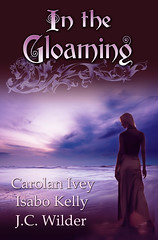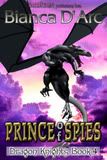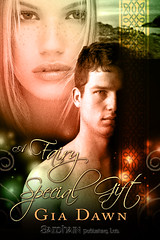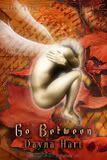Shifters Through the Ages
Change is magic. Magic is change--and we can’t get enough of it. The shift can be as mundane as the sleight of hand which changes a magician’s handkerchief into a bouquet of silk flowers or as extreme as a transformation from man to dragon and back again.
Samhain Publishing’s recent open call for stories about cat shifters only reinforces the point. Voluntary shapeshifters are a staple of epic and urban fantasy. Even Dracula did his bit (pun intended), transforming on occasion from man to mist, wolf and bat.
This fascination with shapeshifters has a long literary history. In classical mythology, the gods routinely take the shape of other people to pursue their affairs. Zeus, the head of the Greek pantheon, was the pro from Dover when it came to pretending to be someone else to achieve his amorous goals. At one point he even turned himself into the goddess Artemis to get close to Callisto, the female object of his then current affections.
He wasn’t the only one. Britain’s King Arthur owes his existence to a human variation on this ploy. His mother Ygraine claimed she only slept with Uther Pendragon--while she was still married to his rival Gorlois--because she thought she was sleeping with her husband. And people bought it too.
To be fair, they also accepted it when Danae said Zeus impregnated her in the form of a shower of gold. At least the grown-ups did. I suspect her son Perseus had a lot harder time of it. Can you imagine trying to explain to your buds that your absent dad was “a golden shower”? Is it any surprise the kid grew up tough? I bet they called him “Percy” too.
More familiar--and undoubtedly more attractive--to today’s readers of shapeshifter romances are Zeus’s other guises. On various occasions, he transformed into an eagle, a swan and a bull. His brother Poseidon took the form of a horse and a ram.
Our culture’s somewhat disapproving view of these transformations is colored by modern notions of morality. The Greeks and Romans, however, didn’t apply the same standards to their gods they applied to themselves.
To a large degree, Zeus and Poseidon owed their position at the top of the divine food chain to their extraordinary potency. Their ability to sire offspring in a multitude of forms was seen as a reflection of their ability to ensure the fertility of the land and the sea. In contrast, their brother Hades, the lord of the dead, displayed no transformative power. He achieved his ends through stealth (he possessed a helmet which allowed him to turn invisible) and brute force. He also sired no children.
The animals Zeus and Poseidon chose for their transformations were significant too. Horses, cattle and sheep were the “noble” animals which formed the basis of civilization as the Greeks and Romans understood it. The horse offered mobility and a strategic advantage on ancient battlefields. Cattle drove plows, fertilized fields and provided the finest meat. Sheep provided clothing and meat.
The birds reflected Graeco-Roman political and spiritual aspirations. Eagles make their nests in the highest crags--mountains like Olympus, the gods’ supposed home. In addition, the eagle’s ferocity provided a compelling symbol of military might. Rome made the eagle its emblem, and for over four hundred years small figures of eagles topped all legionary flags. Swans were seen as symbols of personal nobility and sacrifice because they were believed to mate for life.
In contrast, the wolves and big cats beloved of urban fantasies were shunned in classical mythology. The Greek werewolf myth is a cautionary tale about Lycaon, a lawless tyrant with no respect for god or man. Lycaon attempted trick the gods into eating human flesh. Some sources said he served them his dismembered son at a banquet in their honor. Others claimed he sacrificed a child on one of Zeus’s altars. For his crimes, Zeus transformed Lycaon and his sons into wolves--the symbol of everything destructive to Greek civilization.
This curse further threatened anyone who participated in the rituals held at Lycaon’s altar. The affected person could only regain their humanity if they abstained from eating human flesh for a period of nine years--something the Greeks obviously considered beyond a wolf’s ability. No self-respecting Greek hero was ever suckled by a she-wolf, for example. That was left to the Romans, who everyone knew were just a toga (and a few thousand legions) away from being barbarians themselves.
Lycaon’s daughter escaped being transformed into a wolf, because she was a companion (or priestess) of Artemis and presumably not a party to her father’s atrocities. But that didn’t mean she got off scot-free.
Lycaon’s daughter was the same Callisto Zeus wooed in the guise of Artemis. This little adventure didn’t set well with either Artemis (who felt Callisto belonged to her) or Zeus’s wife Hera (who felt the same way about Zeus). So Zeus transformed Callisto into a bear, ostensibly for her protection. But you got to wonder about that when both Hera and Artemis immediately declared open season on bears and shot her dead.
The moral of Callisto’s story is it didn’t pay to transform into a wolf, bear, big cat or any other large predator in classical mythology. Most medieval legends cast them as villains or victims too, presumably for the same reasons the Greeks did. Wolves, bears, wild boars and lynxes were agents of chaos. They killed people and destroyed livestock. They were also the totems of the barbarian tribes--from the Picts and Scoti to Viking berserkers--who pillaged and plundered the struggling outposts of Christian civilization.
The one notable exception can be found in Marie de France’s poem Bisclavret. Bisclavret is a French nobleman who turns into a wolf three days a week. Seeking to take a lover, his unfaithful wife traps him in wolf form. But virtue (and vice) will out, and she is foiled when the wolf is befriended by the king. Bisclavret, however, is a remarkably passive hero. Other than behaving in a manner atypical of a wolf (he doesn’t humans for the most part) he takes no action on his own behalf. He’s a victim in the sense he can’t save himself. That job is left to the king and his ministers.
It took the Industrial Revolution to make heroes of predatory shapeshifters. In part this was because they posed no longer much of a threat. Wolves had been eradicated from most of civilized Europe and North America. Lions and tigers and bears (oh my!) represented a danger only if they escaped from a zoo.
The allure of Dracula probably helped. So did the folk tales collected by the Brothers Grimm and others in the nineteenth century, which portrayed various wild animals as potential helpers of the hero. My personal favorite was “Tsarevitch Ivan, the Fire Bird and the Gray Wolf”, in which the rather dim Ivan succeeds in winning the matched set of princess and kingdom entirely due to the cunning of the wolf, who turns out to be an enchanted prince.
I always thought the wolf prince’s bride would have a lot more fun than Ivan’s trophy wife. Certainly she’d never be bored. From the number of sexy werewolves, dragons and other predatory shifters currently occupying bookstore shelves, it appears a lot of people agree with me.
Panel discussions at several recent conventions suggest there may be other factors at work as well. Predatory shapeshifters don’t have to play by the rules of polite society. They can get away with all the Uber Alpha Male behavior most romance heroes abandoned sometime in the 1990s, simply because they can overpower any human butt-kicking chick. This makes the heroine’s ultimate victory through the power of love that much more delicious.
I agree there’s something intensely satisfying about watching “The bigger they come, the harder they fall” play out in a well-written story. Part of it is the natural desire to see right vanquish might. But I also think part of the attraction of these shifters is their comforting badness. Face it, the cities we live in and the worlds we create in our fantasies tend to be very scary places. Who would you want guarding your back when the flit hits the shan--a nice noble swan, a wolf with a trickster’s brain or a dragon who can reduce the villains to crispy critters?
Then there’s the magic of the change itself. If our heroes and heroines represent what we wish to be, what do all these shapeshifter stories say about us? Could they represent our desire to transform physically ourselves--perhaps laying the groundwork for the day when genetic manipulation becomes a real possibility? Or are they metaphors for a spiritual transformation? Or both?
I couldn’t begin to say. I’m having too much fun watching the writing magicians pull rabbits--and wolves and tigers and dragons--from their storytelling hats. And I don’t plan to stop anytime soon.









7 comments:
Jean Marie, Awesome post!!!!! Gia
Thanks, Gia! Glad you liked it. :-) Jean Marie
Brilliant post, Jean Maria! But I would expect nothing less from you. : D
Grace
Thanks {{{{Grace}}}}!
Wow, what an excellent post. You definately know your gods and goddesses. Yeeowza!
~~Becka
JM...you make me think, and that's the biggest compliment I can give someone.
In this case, you also made me snort coffee out my nose. Percy of the golden showers indeed! I think I heart you :)
You know, JM, even drama finds its origins in shapeshifting.
After Zeus (in- alas- human form)impregnated Dionysis' mother then turned her into smoking cinders upon her misguided request that he show her his full and real self, he carried little Dion in his thigh until birth.
After several years, Hera (being Hera) went after Dionysis again. This time, Zeus turned his boy into a goat in order to hide him among the beasts of the forest and field from the vengeful queen. Now, granted, Dionysis didn't shapeshift himself, but still you can see how it comes into play.
Great article!
Post a Comment